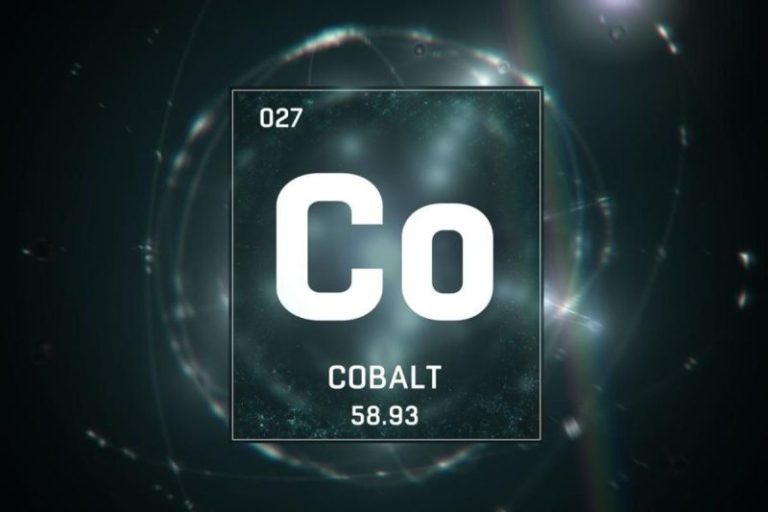Statistics Canada released August’s gross domestic product (GDP) data on Friday (October 31). The numbers showed a 0.3 percent decline in real GDP overall, with declines seen in many sectors of the Canadian economy.
The mining, quarrying, and oil and gas sector was down 0.7 percent during the month after increasing in June and July. This was led by a 5 percent decrease in support activities and a 1.3 percent drop in mining and quarrying, including a 1.2 percent decline in metal ore mining, while oil and gas extraction increased by 0.2 percent.
Likewise, the manufacturing sector was down 0.5 percent, with durable goods manufacturing weighing heavily with a decrease of 0.8 percent. One spot of good news is that primary metal manufacturing rose 3.7 percent, which was headlined by a 9.6 percent increase in aluminum production and processing.
The report also included an advance estimate for September, predicting a 0.1 percent increase, as well as increases in the resource sector. Overall, this would mean Q3’s real GDP also increased by 0.1 percent, avoiding a recession following a 0.4 percent decline in the second quarter.
These figures, along with the consumer price index edging up to 2.4 percent in September, may also have played into the Bank of Canada’s decision on Wednesday (October 29) to cut its benchmark interest rate by another 25 basis points to 2.25 percent.
In its announcement, the central bank noted that the Governing Council sees the policy rate at the right level to maintain inflation close to its 2 percent target, but it would be prepared to respond if the outlook changes.
Bank Governor Tiff Macklem once again stressed that “monetary policy cannot undo the damage caused by tariffs.” However, while the central bank expects the economy to remain weak through the end of 2025, it was also expecting modest growth.
Meanwhile, the United States Federal Reserve also announced on Wednesday that it would cut its Federal Funds Rate by 25 points to the 3.75 to 4 percent range. In its statement, the Federal Open Market Committee discussed slowing job growth and rising inflation, which has moved away from its 2 percent target.
The next meeting of the Fed is scheduled for December 9 and 10; however, concerns remain about data availability, as a shutdown of the US federal government has affected agencies’ ability to deliver critical economic and job data, leaving the Fed to rely on private-sector research.
Markets and commodities react
Canadian equity markets were mixed this week.
The S&P/TSX Composite Index (INDEXTSI:OSPTX) gained 0.04 percent over the week to close Friday at 30,260.74.
On the other hand, the S&P/TSX Venture Composite Index (INDEXTSI:JX) ended the week down 0.49 percent at 957.88. The CSE Composite Index (CSE:CSECOMP) also fell this week, shedding 1.21 percent to close out the week at 175.27.
The gold price was down 3.08 percent this week, closing at US$4,001.76 per ounce. The silver price also fell but fared better, dropping just 0.52 percent to US$48.57 by 4:00 p.m. EDT Friday.
Meanwhile, in base metals, the copper price shed 1.5 percent to US$5.16 per pound.
The S&P Goldman Sachs Commodities Index (INDEXSP:SPGSCI) fell 0.79 percent to end Friday at 557.01.
Top Canadian mining stocks this week
How did mining stocks perform against this backdrop?
Take a look at this week’s five best-performing Canadian mining stocks below.
Stocks data for this article was retrieved at 4:00 p.m. EDT on Friday using TradingView’s stock screener. Only companies trading on the TSX, TSXV and CSE with market caps greater than C$10 million are included. Mineral companies within the non-energy minerals, energy minerals, process industry and producer manufacturing sectors were considered.
1. MAX Power Mining (CSE:MAXX)
Weekly gain: 82.5 percent
Market cap: C$56.01 million
Share price: C$0.73
MAX Power is a hydrogen exploration and development company advancing its natural hydrogen properties in Saskatchewan, Canada.
In total, the company holds permits for 1.3 million acres of land across the province, with an additional 5.7 million under application. Its primary site is focused on the Genesis Trend, a 200 kilometer by 75 kilometer area near the Regina-Moose Jaw Industrial Corridor, a proposed hydrogen hub.
On October 24, the company announced it received a drilling license for its first hydrogen well within the Genesis Trend, which will also be Canada’s first deep well dedicated to natural hydrogen.
The company said operations at its Lawson well will commence on or about November 7. The program will include the use of gas chromatographs to sample for helium, nitrogen and methane and another mass spectrometer specifically to detect hydrogen.
Then, on Monday (October 27), MAX Power reported that it had identified the Bracken target in Southwest Saskatchewan along the border with Montana. It marks the company’s first high-priority target outside of the Genesis Trend, lying within the 120,000 acre Grasslands project. The next step will be to acquire proprietary 2D seismic data, which it anticipates will be completed in Q4 of 2025.
On Tuesday (October 28), MAX announced the development of the MAX Power Large Earth Model Integration, which combines datasets from government and commercial sources to create maps that enable the evaluation of hydrogen prospectivity and more.
The company said that in version 2 of the technology, it will integrate machine learning into the process to better understand the data at a granular level and will eventually be able to apply it to any jurisdiction in the world.
The most recent news came on Thursday (October 30), when MAX appointed Ranjith Narayanasamy, who is President and CEO of the Petroleum Technology Research Centre, as its new CEO effective December 8. Current CEO Mansoor Jan will be transitioning to the CEO of the company’s US critical minerals subsidiary, which it is eyeing for a potential spin-out.
2. Manganese X Energy (TSXV:MN)
Weekly gain: 57.89 percent
Market cap: C$25.75 million
Share price: C$0.15
Manganese X Energy is an exploration and development company focused on its flagship Battery Hill project in New Brunswick, Canada, from which it plans to produce high-purity battery grade manganese for lithium-ion batteries.
The property consists of 55 claims covering an area of 1,228 hectares in Carlton County, and hosts five primary manganese-iron zones: Iron Ore Hill, Moody Hill, Sharpe Farm, Maple Hill and Wakefield.
A June 2021 technical report demonstrated a measured and indicated resource of 34.86 million metric tons of ore grading 6.42 percent manganese and 10.67 percent iron, and an inferred resource of 25.9 million metric tons grading 6.66 percent manganese and 10.92 percent iron.
On September 9, Manganese X announced it was advancing to the third and final phase of battery testing with US battery company Charge CCCV. Phase 2 testing results showed 70 percent capacity retention after 4,600 cycles, which the company said is more than double the cycle life of conventional nickel-manganese-cobalt batteries.
As for this week, on Thursday the company announced the appointment of Desmond Tranquilla to its board of directors. Tranquilla has more than 32 years of experience in the mining industry and is currently vice president of projects with Canada Nickel Company (TSXV:CNC).
3. Copper Quest Exploration (CSE:CQX)
Weekly gain: 48.15 percent
Market cap: C$10.23 million
Share price: C$0.2
Copper Quest Exploration is an exploration company building a portfolio of prospective copper properties in North America, including the Stars and Stellar copper projects in British Columbia, Canada.
It recently acquired two new projects. The first, announced on September 22, is the Nekash copper-gold porphyry project in Idaho, US. The asset lies in the Idaho-Montana porphyry belt and consists of 70 unpatented lode claims covering 585 hectares.
Historic exploration and recent work has confirmed the presence of copper and gold quartz veins, according to the release, with rock chip samples at porphyry style veins revealing grades up to 6.6 percent copper and 0.6 grams per metric ton (g/t) gold.
The second came this Thursday, when the company acquired the 2,954 hectare Kitimat copper-gold project in the Skeena Mining Division of Northwest British Columbia. Situated in the prolific Stikine Terrane, the project has a history of exploration dating back to the 1960s.
In 2010, diamond drilling across 16 holes returned a highlighted assay of 1.03 g/t gold and 0.54 percent copper over 117.07 meters from surface.
4. Liberty Stream Infrastructure Partners (TSXV:LIB)
Weekly gain: 42.22 percent
Market cap: C$105.49 million
Share price: C$0.64
Liberty Stream is a lithium development company advancing its direct lithium extraction technology in the US.
The company is working on a pair of projects — one in Texas’ Permian Basin and the other in North Dakota’s Bakken Oil Field — aimed at extracting lithium from brines used in oil and gas production.
On October 7, the company entered site preparations for the final installation and commissioning of its bulk lithium refining unit in Texas, which will allow it to convert lithium chloride eluate into commercial-grade lithium carbonate. It expects to begin producing lithium carbonate from the unit in the second half of Q4, and launch full-scale operations in 2026.
The most recent news came on October 23, when it announced that it was awarded a US$500,000 grant from the State of North Dakota for the development of lithium carbonate production to supply a battery cell manufacturing facility in the state.
5. Signature Resources (TSXV:SGU)
Weekly gain: 40 percent
Market cap: C$10.69 million
Share price: C$0.07
Signature Resources is a gold exploration company focused on its Lingman Lake gold project in Ontario, Canada.
The property consists of 1,274 unpatented single-cell mining claims and 13 multi-cell claims covering more than 24,000 hectares in Northwest Ontario. Airborne geophysical surveys completed in 2021 identified 14 high-value targets with the potential for multiple gold occurrences.
On September 25, the company announced plans for a six hole, 3,000 meter diamond drill program, which it expects to complete this fall. Signature used combined data from its 2024 drill campaign, historical workings and the results from a 2021 3D induced polarization survey to refine targets for the diamond drilling.
This Thursday, the company closed an upsized non-brokered private placement and issued 23 million charity flow-through units, 10.46 million flow-through units, and 18.53 million non-flow-through units, generating proceeds of C$3.42 million.
Funds will be used for exploration activities at Lingman Lake, including the diamond drill program, and for general working capital.
FAQs for Canadian mining stocks
What is the difference between the TSX and TSXV?
The TSX, or Toronto Stock Exchange, is used by senior companies with larger market caps, and the TSXV, or TSX Venture Exchange, is used by smaller-cap companies. Companies listed on the TSXV can graduate to the senior exchange.
How many mining companies are listed on the TSX and TSXV?
As of May 2025, there were 1,565 companies listed on the TSXV, 910 of which were mining companies. Comparatively, the TSX was home to 1,899 companies, with 181 of those being mining companies.
Together, the TSX and TSXV host around 40 percent of the world’s public mining companies.
How much does it cost to list on the TSXV?
There are a variety of different fees that companies must pay to list on the TSXV, and according to the exchange, they can vary based on the transaction’s nature and complexity. The listing fee alone will most likely cost between C$10,000 to C$70,000. Accounting and auditing fees could rack up between C$25,000 and C$100,000, while legal fees are expected to be over C$75,000 and an underwriters’ commission may hit up to 12 percent.
The exchange lists a handful of other fees and expenses companies can expect, including but not limited to security commission and transfer agency fees, investor relations costs and director and officer liability insurance.
These are all just for the initial listing, of course. There are ongoing expenses once companies are trading, such as sustaining fees and additional listing fees, plus the costs associated with filing regular reports.
How do you trade on the TSXV?
Investors can trade on the TSXV the way they would trade stocks on any exchange. This means they can use a stock broker or an individual investment account to buy and sell shares of TSXV-listed companies during the exchange’s trading hours.
Article by Dean Belder; FAQs by Lauren Kelly.
Securities Disclosure: I, Dean Belder, hold no direct investment interest in any company mentioned in this article.
Securities Disclosure: I, Lauren Kelly, hold no direct investment interest in any company mentioned in this article.
This post appeared first on investingnews.com










